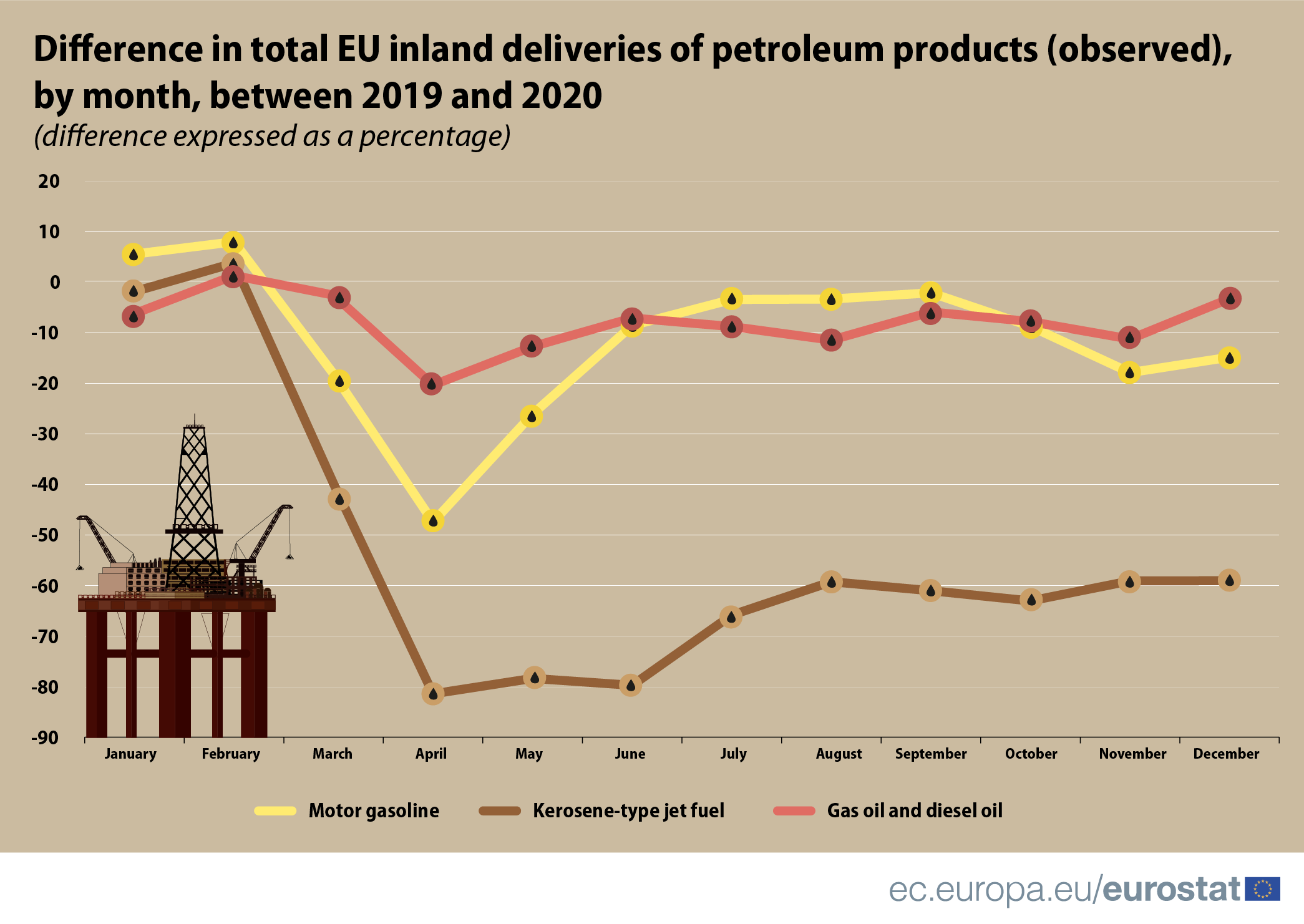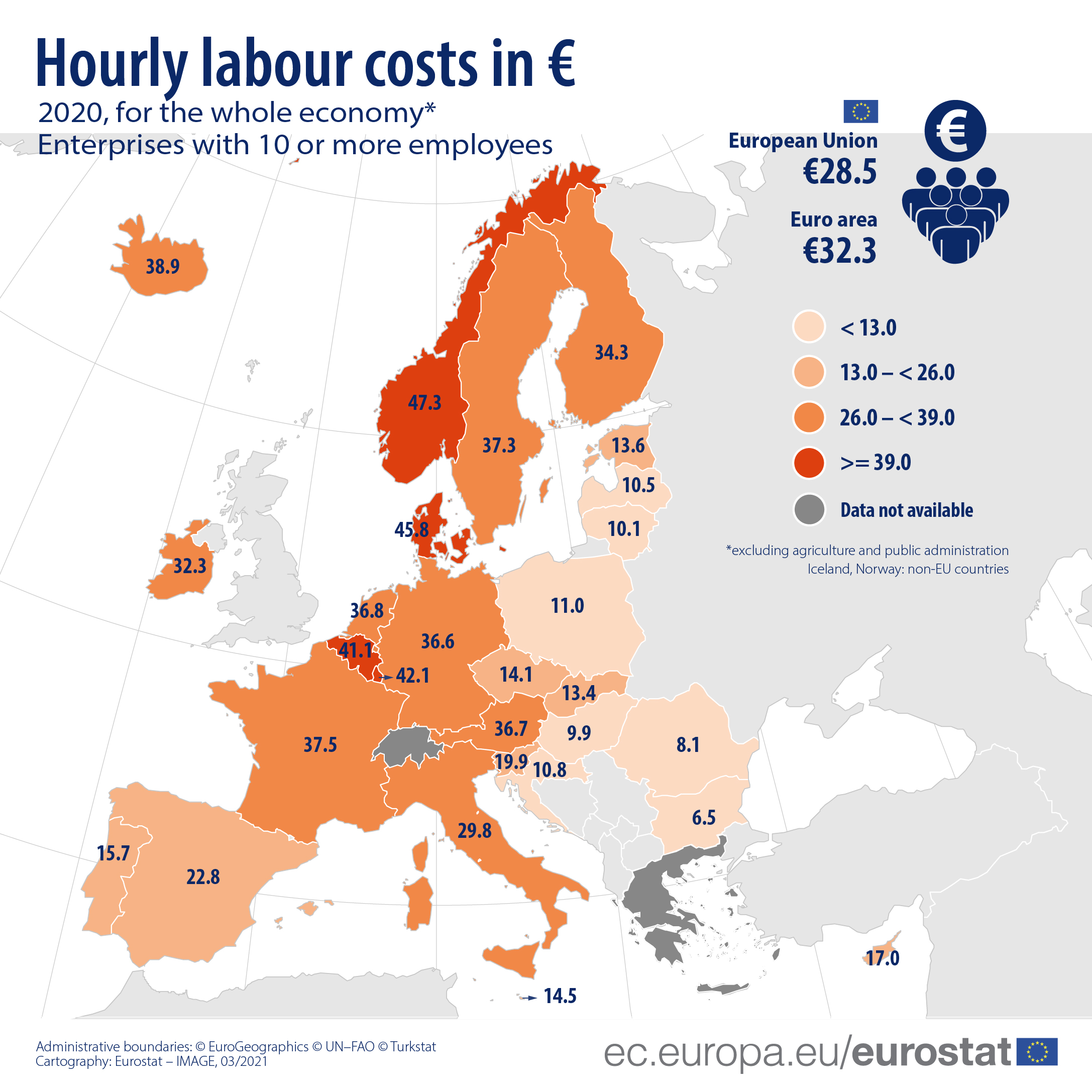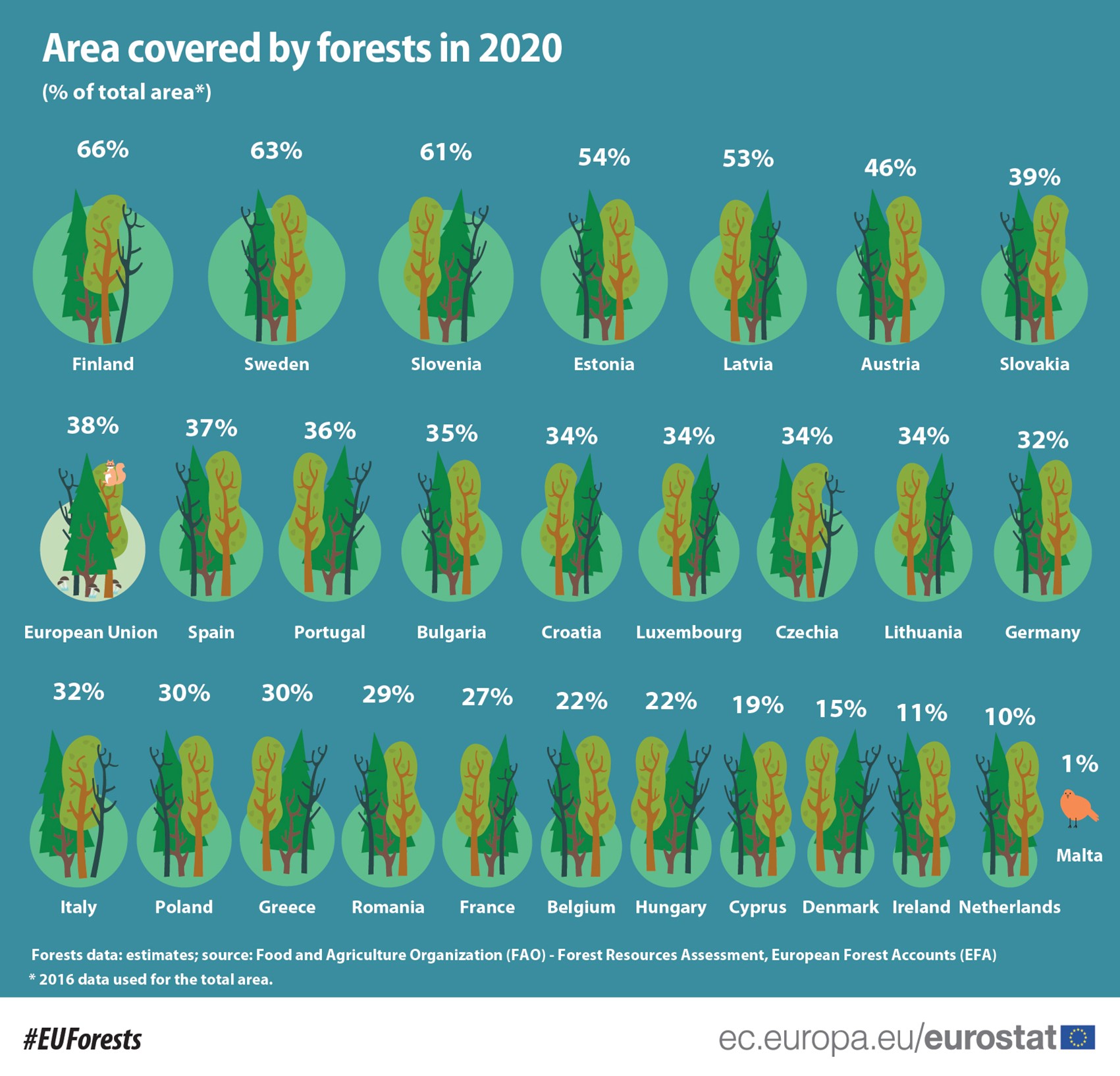Since early 2020, restrictive measures have been taken to slow down the spread of COVID-19.
Statistics
Economic activity, and therefore the labour market across the EU, has been hit by the COVID-19 pandemic.
In 2020, the COVID-19 pandemic and the government measures to curb its spread affected the labour market in the EU.
In the fourth quarter of 2020, the labour market in the EU continued to show indications of a potential recovery.
In 2020, exports and imports of medicinal and pharmaceutical products increased (blue dots in the visual below) in the vast majority of the EU Member States - despite the general decrease in trade
In the last three months prior to the 2020 survey on the use of ICT in households and by individuals, one in two EU citizens (55%) aged 16-74 reported that they had sought online health information
In 2020, average hourly labour costs in the whole economy (excluding agriculture and public administration) were estimated to be €28.5 in the EU and €32.3 in the euro area, up compared to €27.7 and
The COVID-19 pandemic itself and the accompanying restrictions have impacted on the supply of and demand for many goods and services produced and traded within the EU’s business economy.
In 2020, the EU had an estimated 159 million hectares of forests. Their area has increased by almost 10% since 1990 (145 million hectares).
In 2020, 20.6% of the EU population was aged 65 years or over; this was 3.0 percentage points higher than the corresponding share from a decade earlier.









